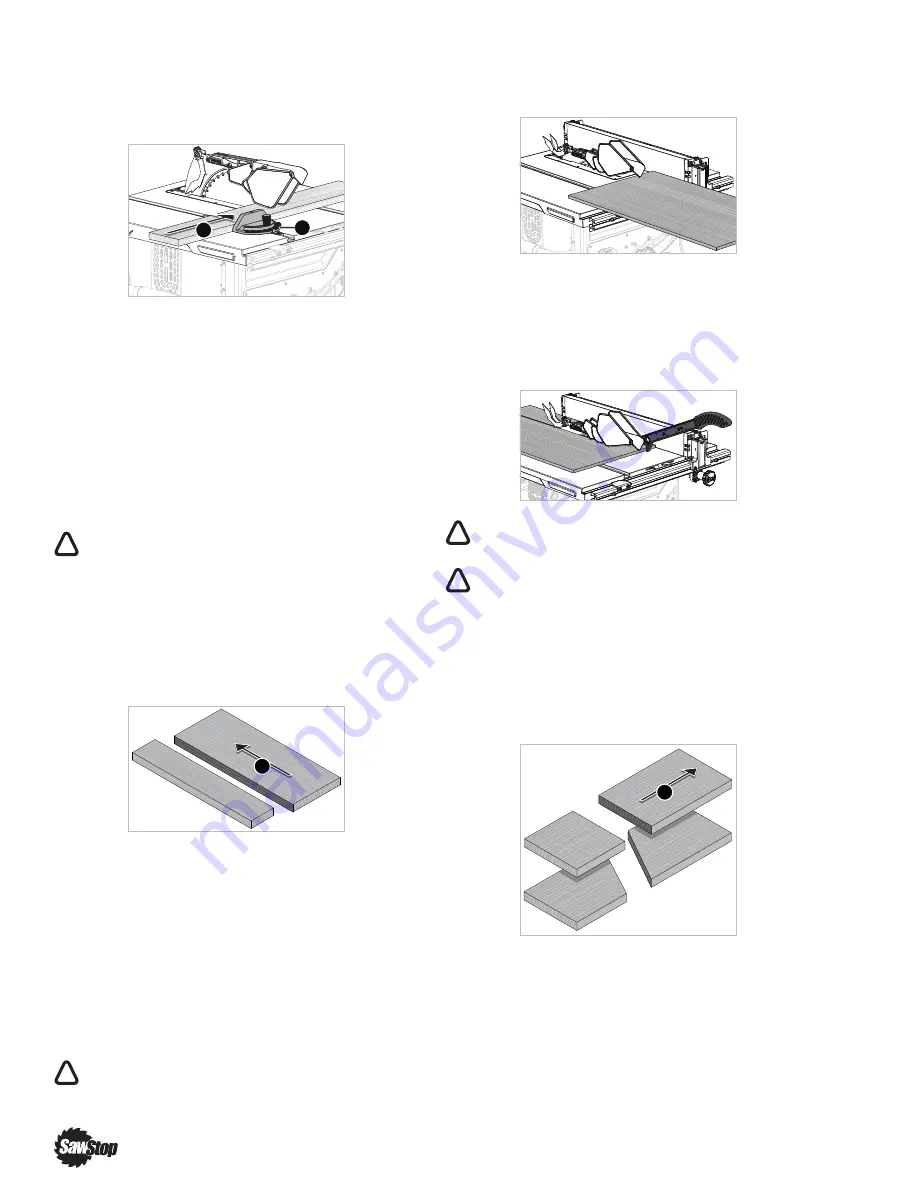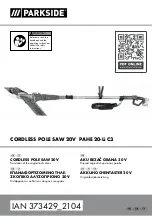
Miter Gauge
Always use the miter gauge (C) when cutting across
the grain. As shown in the illustration, the grain
direction (D) is essentially perpendicular to the cut.
Always remove the rip fence from the table when
making cuts with the miter gauge. If the workpiece
contacts the rip fence during a crosscut, the
workpiece could deflect and bind, resulting in
kickback.
If using an extruded aluminum or other metal miter
fence attachment, be sure to maintain a gap of at least
1/8” between the blade and any conductive surfaces to
avoid any chance of activation.
You can also attach an extension to the miter gauge,
making the effective contact face wider.
To prevent interference with the workpiece,
always remove the rip fence when making
cross-cuts.
Rip Cut
A rip cut is created by cutting with the grain of the
workpiece. The direction of the grain (A) is essentially
parallel to the cut. You must use the rip fence to
support and guide the workpiece.
1. Tilt the blade to desired bevel angle as needed, and
then adjust the blade elevation to about
1/8
" to
1/4
"
(3 to 6 mm) higher than the workpiece.
2. Position the rip fence (or low fence,
at the desired rip width and lock in place. Position
the workpiece flat on the table and flush against
the rip fence.
3.
Make sure the workpiece is not touching the blade.
With the power switch on, pull the Start/Stop
paddle to spin the blade.
Make sure the workpiece is not touching blade
when starting motor.
4. Hold the workpiece squarely and firmly against the
rip fence face and table. Push the workpiece slowly
and smoothly toward and past the blade.
5. When cutting long material, ensure adequate
support so the workpiece does not move or shift as
it moves past the edge of the table.
Use a push stick if your hand comes within 6" (150
mm) of the blade. The saw comes with a push stick
but you can also make one (
).
Do NOT use the miter gauge when making rip
cuts.
The blade guard should be used for all through
cuts.
Cross Cut
A cross cut is created by cutting across the grain of
the workpiece. The direction of the grain (A) is
essentially perpendicular to the cut. You must use the
miter gauge to support and guide the workpiece.
Always remove the rip fence when making cross cuts.
1. Tilt the blade to the desired bevel angle as needed,
and then adjust the blade elevation to about
1/8
" to
1/4
" (3 to 6 mm) higher than the workpiece.
2. Place the miter gauge in the right-hand miter slot
for bevel cuts (
), or in either the
right-hand or left-hand miter slots for non-bevel
cuts.
C
D
!
A
!
!
!
A
26
|
SawStop
®
Compact Table Saw
















































